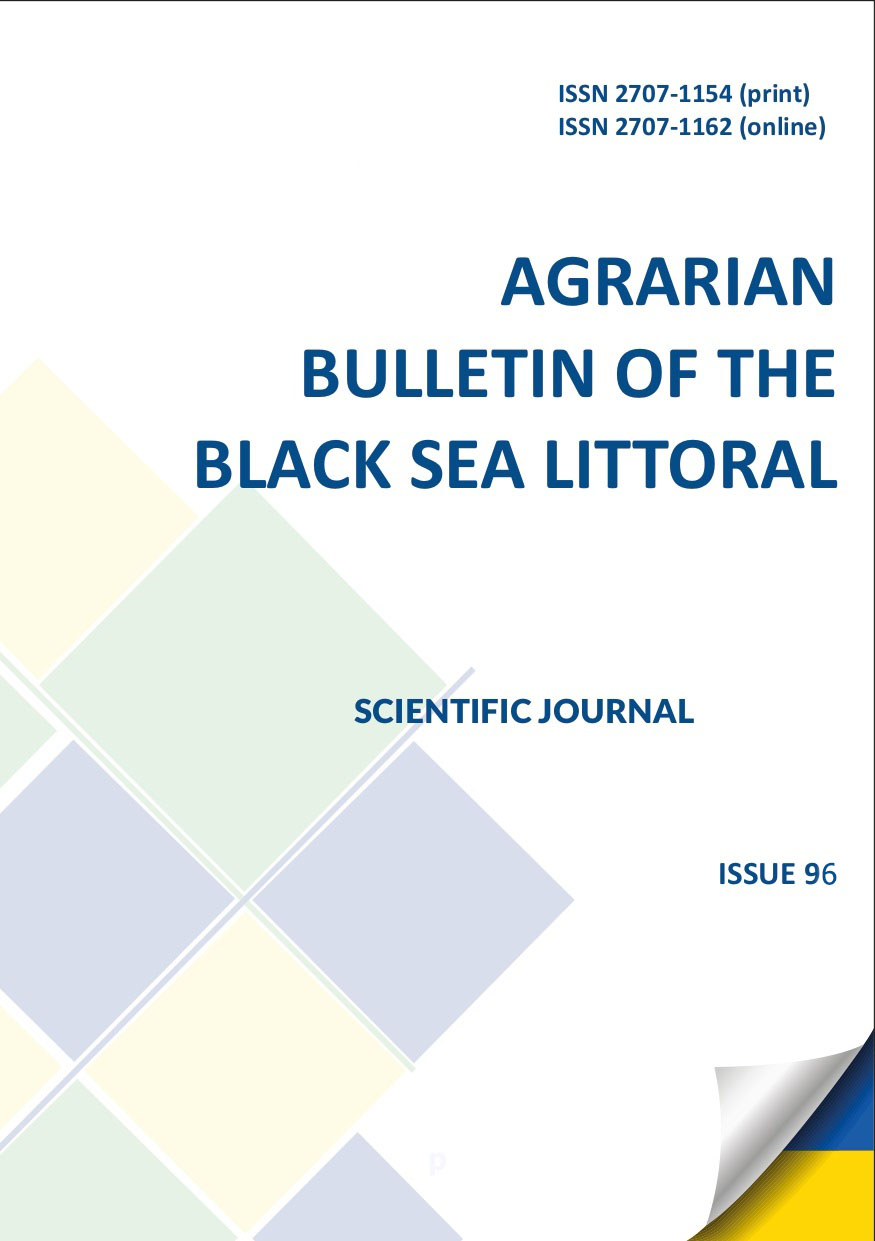INFLUENCE OF INTRODUCTION OF PROPYLENGLYCOL AND STA-HALL INTO THE DIET ON SOME BIOCHEMICAL INDICATORS OF BLOOD PLASMA
DOI:
https://doi.org/10.37000/abbsl.2020.96.05Keywords:
cows, propyleneglycol, Sta-HOL, ketone bodiesAbstract
The experiment was carried out on 3 groups of cows of the Ukrainian milk dairy black-pockmarked breed with a productivity of 5.5-6 thousand kg of milk for the lactation period, 7 animals on each group. The purpose of our work is to study the
effect of adding cows to the diet during the transition period of propylene glycol, which increases the amount of propionic acid in the rumen and whose STA-Hall affects lipid metabolism, prevents fatty liver and ketosis. The first control, the cows of which received the usual diet, which was accepted on the farm, the second (experimental 1) received 150 g of dry propylene glycol in the diet and the third group (experimental 2), in addition to dry propylene glycol, additionally received 20 g of Sta-Hall feed additive. The experiment continued during the transition period (three weeks before and three weeks after the calving). The addition of propylene glycol and Sta-Hol to the diet of cows during the transition period helps to increase the concentration of glucose in the blood. There is a decrease in the content of triacylglycerols in blood plasma by 26.7% compared with the control and 23% with the first experimental groups of animals. Similar datas were obtained on such an indicator of lipid metabolism as total cholesterol, which was lower in the second experimental group of animals by 9.9% compared with the control and 8% compared with the first experimental groups of animals. The introduction of propylene glycol and Sta-Hol into the diet of cows during the transitional period contributed to a decrease in the content of β-hydroxybutyrate (VNVA) in the second experimental group of animals by 1.9% lower compared to the first experimental group and 64% lower than the control group of cows and the amount of ketone bodies, compared with the first experimental and control groups by 12.9% and 64.6%, respectively.At the end of the experiment, the albumin fraction of blood serum proteins in the second experimental group was higher in comparison with the first experimental and control groups of animals by 7.1% and 18.0%, respectively. This indicator reflects the functional state of the liver, and indicates the contribution of propylene glycol and STA-hol in the restoration of its protein synthesizing function.
References
2. Nielsen N. I. Propylene glycol for dairy cows a review of the metabolism of propylene glycol and its effects on physiological parameters, feed intake, milk production and risk of ketosis. N. I. Nielsen, K. L. Ingvartsen. Anim. Feed Sci. Technol. — 2004. — Vol. 115. — P. 191–213.
3. Kabu M. Effects of boron, propylene glycol and methionine administration on some hematological parameters in dairy cattle during periparturient period / M. Kabu, T. Civelek, F. M. Birdane. Veterinarski Arhiv. — 2014. —Vol. 84, № 1. — P. 19 29.
4. Bertics S. J. Effects of fat and methionine hydroxy analog on prevention or alleviation of fatty liver induced by feed restriction. S. J. Bertics, R. R. Grummer. J. Dairy Sci. — 1999. — Vol. 82.— P. 2731–2736.
5. Сахнюк В.В. Поліморбідність внутрішньої патології у високопродуктивних корів. Автореферат дисертації на здобуття наукового ступеня доктора ветеринарних наук. Біла Церква – 2009 - С.34
6. Тодоров М.І., Чернецова Л.М. Причини та поширення кетозу корів у ООО АФ "Дністровська". Аграрний вісник Чорного моря. 83. Одеса- 2017.- С.258-261.


